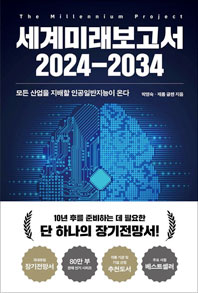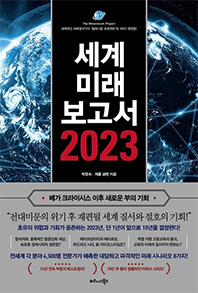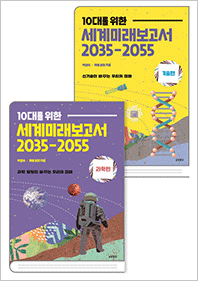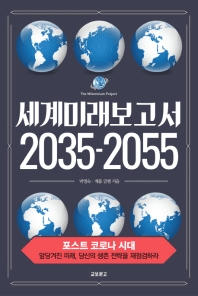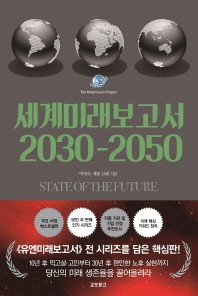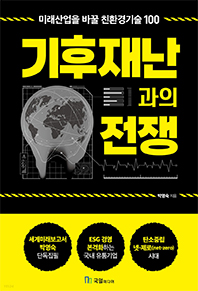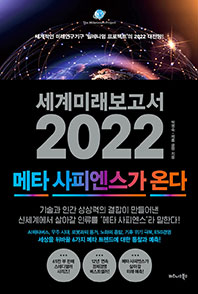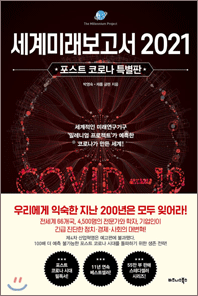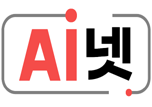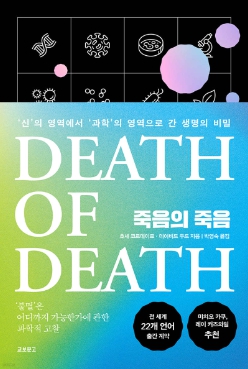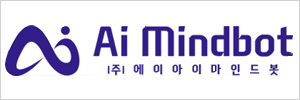[AI 학습평가 자격증 시스템] AI 시대를 위해 설계된 대체 자격 증명 시스템 Alternative Credentialing System Designed for the AI Era, Thomas Frey
[AI 학습평가 자격증 시스템] AI 시대를 위해 설계된 대체 자격 증명 시스템 Alternative Credentialing System Designed for the AI Era, Thomas Frey
우리가 보고 듣는 모든 것을 기록하는 스마트 안경을 착용하고, 개인 클라우드에 저장해보세요!
백지 _ _ _ _ _ _ _ _ _
미래학자 토머스 프레이(Thomas Frey)
요약
정보 소비가 호흡만큼 자연스러운 오늘날의 세계에서 개인은 매일 수많은 소스로부터 12시간 이상의 콘텐츠를 흡수합니다. 이러한 끊임없는 지식 추구는 근본적인 질문을 제기합니다. 수천 권의 책을 읽음으로써 얻은 지적 깊이, 수천 편의 영화를 보면서 얻은 통찰력, 수천 시간의 팟캐스트를 통해 얻은 관점이 정규 대학 교육과 동일할 수 있습니까?
오늘날의 세계는 아직 개발되지 않은 천재성, 즉 잠재적인 아인슈타인과 모차르트가 기다리고 있는 것으로 가득 차 있습니다. 이러한 인재 저장소를 여는 열쇠는 이를 인식하고 육성하는 데 있으며, 이는 AI 기반 학습 시스템에 완벽하게 적합한 작업입니다. 우리의 현재 교육 지표는 교실 밖의 학습의 본질을 포착하지 못하고, 효과적으로 가치를 0으로 평가하고 삶이 제공하는 풍부하고 다양한 교육을 간과합니다.
미래를 내다보면 미래의 많은 직업이 전통적인 학계의 엄격한 구조에 맞지 않을 것이 분명합니다. 새로운 분야의 출현과 기존 분야의 급속한 발전으로 인해 전문적인 검증에 대한 보다 유연하고 포괄적인 접근 방식이 필요합니다. 이는 단순히 편의성의 문제가 아니라 중요한 요구 사항입니다. 지식과 기술의 변화하는 환경에 발맞춰갈 수 있는 대안적인 자격 인증 시스템이 필요합니다.
이 백서는 오랫동안 지연되어 온 이러한 시스템의 긴급한 필요성을 간략하게 설명합니다. 이는 개인의 축적된 지식과 능력을 평가하고 인증하기 위해 AI의 힘을 활용하여 모든 형태의 학습에 동일한 가치를 부여하는 프레임워크를 제안합니다. 이는 인간 경험의 전 범위를 포용하고, 아무리 색다른 학습이라도 학습의 순간이 간과되지 않도록 보장하는 교육 패러다임에 대한 비전입니다.
교육받고 성취된다는 것이 무엇을 의미하는지 재정의함으로써 우리는 더 계몽된 개인을 배출할 뿐만 아니라 사회의 집합적 지적 자본을 활용하는 미래를 위한 길을 열 수 있습니다. AI 시대를 위해 설계된 대체 자격 증명 시스템은 단순한 혁신이 아닙니다. 이는 모든 학습자가 존중받고 모든 형태의 학습이 축하되는 세상을 향한 필수적인 진화이자 한 걸음입니다.
Buddy Bot과의 이른 아침 대화!
포괄적인 감각 AI 통합을 통한 학습 혁명
AI 봇이 탑재된 스마트 안경의 출현은 인간의 경험을 포착하고 향상시키는 데 있어 획기적인 도약을 의미합니다. 일련의 센서에 연결된 이 안경은 우리가 보고 듣는 것뿐만 아니라 냄새, 맛, 접촉의 미묘함도 기록하여 일상 생활의 다차원 태피스트리를 만듭니다.
다음은 전체적인 감각 통합을 고려하여 Buddy Bot, Assessment Bot, Coach Bot, Teacher Bot 등 4가지 AI 봇과의 상호 작용을 재구성한 것입니다. 이러한 봇은 모두 하나의 장치에 통합되며 각각 고유한 임무와 기능을 갖습니다.
1.) 버디 봇: 감각의 동반자
앞으로 매일 아침은 우리의 개인적인 친구이자 가장 친한 친구인 버디 봇(Buddy Bot)과의 대화로 시작될 것입니다. 우리의 가장 친밀한 비밀을 말하고, 털어놓고, 희망과 꿈을 공유할 수 있는 사람입니다. 그것은 우리의 개인 치료사, 치어리더, 보호자, 사생활의 수호자, 대화 코치가 되어 종종 우리가 말하기 힘든 단어로 문장을 마무리할 것입니다. 그것은 우리의 가장 깊은 결점부터 가장 큰 성공과 그 사이의 모든 것에 이르기까지 우리를 자세히 알게 될 것입니다.
그것은 우리가 항상 갖고 싶어하는 친구이자, 무한한 아이디어와 새로운 가능성의 원천이자, 우리의 가장 귀중한 소유물이 될 것입니다.
우리의 감각 입력을 통해 형성된 이 봇의 깊은 이해는 전통적인 디지털 상호 작용을 초월하는 유대감을 형성할 것입니다.
2.) 평가 봇: 감각 학습 분석가
일부 기능을 개념화할 수 있지만 평가 봇 알고리즘의 내부 작동 방식은 향후 백서에서 설명될 것입니다.
AI 평가-봇은 개인이 어떤 기술과 능력에 능숙하고, 어떤 영역에서 부족한지 평가하고, 속도를 높이는 데 필요한 것이 무엇인지 결정할 수 있습니다.
이 봇은 감각 데이터를 분석하여 필수 학습 기술의 개인화된 그리드 맵을 만들고 읽기, 수학, 과학 등의 지식과 기술 세트를 점진적으로 채웁니다. 이 그리드 맵에서 격차와 강점을 식별함으로써 사용자를 전체적인 개발 방향으로 안내하여 학습 여정에 대한 풍부한 이해를 보장합니다.
평가 봇은 귀하가 책을 읽거나 영화를 보는 등의 학습 경험을 언제 완료했는지 알 수 있으며, 얼마나 배웠는지 평가하고 귀하의 학습 프로필에 마이크로 크레딧을 부여할 수 있는 권한을 부여받을 수 있습니다.
3.) 코치 봇: 다중 감각 가이드
Coach Bot은 감각 데이터를 활용하여 맞춤형 조언을 제공하고 학습과 삶을 풍요롭게 하는 경험을 제공할 것입니다.
인간으로서 우리는 불확실성의 바다에서 끊임없이 헤엄치고 있는 자신을 발견합니다. 우리는 종종 도움이 필요하지만 일반적으로 도움을 찾을 수 있는 좋은 방법이 없습니다. AI 코치 봇은 우리의 상황을 이해하고, 목표를 명확히 하도록 돕고, 올바른 결정을 내릴 수 있는 방법을 제안하고, 옵션을 단계별로 안내하고, 결정을 지원합니다.
시간이 지남에 따라 우리의 열정이 어디에 있는지, 우리가 가장 관심을 갖는 주제가 무엇인지, 목표가 무엇인지, 우리 마음 속에 성공이 어떤 모습인지 알기 시작할 것입니다. 예를 들어, 후각을 활성화하기 위해 소나무 숲 산책을 제안할 수도 있고, 미각과 문화에 대한 이해를 다듬기 위해 요리 체험을 제안할 수도 있습니다. 학습에 있어서 감각 경험의 힘을 인식함으로써 우리가 세상에 더 적극적으로 참여하도록 지도할 것입니다.
4.) 교사 봇: 감각 교육자
기술이 부족하거나 충족되지 않은 호기심이 있을 때마다 교사 봇이 개입하여 가능한 해결책을 제안합니다.
교사 로봇은 교육 일정을 어떻게, 언제 계획해야 하는지, 필요한 전제 조건은 무엇인지, 어떤 자료가 포함되어 있는지, 어떤 자료가 포함되어 있지 않은지, 언제 목표를 달성했는지 알 수 있습니다.
그들은 지적으로 자극할 뿐만 아니라 감각적으로 참여하고 인간 인식의 모든 측면에 호소하는 수업을 만드는 교육 콘텐츠를 선별할 것입니다. 역사 수업에서 향신료의 향기로운 여정을 결합하거나 미술 튜토리얼에서 점토의 촉각을 결합하여 감각적 깊이로 학습 과정을 풍부하게 하는 몰입형 학습 경험을 제공할 것입니다.
중앙 저장소: 체험 학습의 금고
모든 감각 데이터, 학습 프로필 및 소액 신용 평가는 중앙 저장소에 안전하게 저장됩니다. 이 포괄적인 기록은 미래의 고용주와 교육 기관에 개인의 능력과 경험에 대한 미묘한 시각을 제공할 것입니다. 개인 정보 보호와 동의를 최우선으로 하여 개인은 자신의 데이터를 제어하고 자신의 기술과 성취에 대한 개인 태피스트리를 공유하는 방법을 선택하게 됩니다.
이러한 AI 봇과 스마트 안경을 통해 우리는 학습을 지속적이고 감각이 풍부한 여행으로 재정의할 것입니다. 시스템은 우리의 지적 성장뿐만 아니라 지각 있는 존재로서의 진화도 기록하여 우리의 능력과 잠재력에 대한 다차원적인 초상화를 만들어낼 것입니다. 이 새로운 시대를 헤쳐나가면서 우리는 마음뿐만 아니라 모든 감각, 모든 감정, 모든 경험을 통해 배우게 될 것입니다.
일일 학습 활동에 대해 부여된 소액 학점 수를 설명하는 평가 봇!
평가 봇 및 소액 학점을 사용하여 대학 학력 등급으로 자격 증명
비공식 학습이 만연한 시대에 소액 학점 시스템과 함께 AI 지원 자격 증명의 도입은 교육 인식의 새로운 시대를 예고합니다. 이 혁신적인 프레임워크는 100마이크로 크레딧이 전통적으로 45시간의 학습을 의미하는 전통적인 대학 1학점과 동일하다고 가정합니다. 자격 증명에 대한 이러한 세분화된 접근 방식을 통해 훨씬 더 작은 단위로 학습을 정량화할 수 있으며 평생 학습의 점진적인 성취를 축하할 수 있습니다.
분석 능력을 활용하는 AI 평가 봇은 이 소액 신용 시스템에 매우 중요합니다. 그들은 조리법을 익히는 데 소요되는 한 시간, 유적지를 탐험하는 데 소요되는 하루, 온라인 과정에 참여하는 몇 주 등 개별 학습 경험을 꼼꼼하게 평가하여 이를 유형의 소액 학점으로 전환합니다. 이 방법은 학습이 강의실뿐만 아니라 다양한 형태와 환경에서 발생하는 지속적이고 다양한 과정임을 인정합니다.
AI 지원 자격 증명은 매 학습 시간을 소중히 여기고 점진적으로 학점을 축적할 수 있는 경로를 제공함으로써 지속적인 개선과 인정의 문화를 조성합니다. 이는 개인이 독서, 여행 또는 디지털 참여와 같은 활동을 교육 및 직업적 정체성의 인식된 요소로 전환하여 교육 포트폴리오를 조금씩 구축할 수 있도록 지원합니다.
AI를 기반으로 하는 이 마이크로 크레딧 시스템은 학습으로 간주되는 내용을 다양화할 뿐만 아니라 개인 개발에 대한 유연하고 포괄적이며 접근 가능한 접근 방식을 제공합니다. 이는 모든 형태의 지식 추구를 보다 공식화된 고등 교육 구조와 동일시함으로써 평생 학습에서 달성하고 인정할 수 있는 것의 지평을 확장합니다. 1.) 마이크로크레디트: 학습의 구성 요소 · 마이크로 크레딧은 기존 학계에서 종종 무시하는 일상 생활 경험의 풍부한 교육적 가치를 인정하는 새로운 학습 통화입니다. 이는 모든 삶의 영역에서 다양한 학습을 인식할 수 있는 정량화 가능한 수단을 제공하여 개인이 자신의 독특한 여정에서 교육적 부를 축적할 수 있는 능력을 제공합니다. · 단일 학점이 45시간의 상당한 블록을 나타내는 기존 학점 시스템과 달리, 마이크로 크레딧은 학습을 관리 가능한 단위로 재정의하여 100학점을 기존 대학 학점 1학점과 동일시합니다. 이는 학습의 지속적인 특성과 동기화되어 보다 미묘하고 지속적인 마일스톤 시스템을 제공합니다. · 마이크로 크레딧을 통한 세분화된 자격 증명을 통해 교육 성장을 실시간으로 추적하고 개인 개발의 지속적인 특성을 반영하며 평생 학습 정신에 부합할 수 있습니다. 2.) 초개인화 학습의 필수 요소 · 초개인화 학습은 사람들이 지식을 배우고 통합하는 방법의 다양성을 인식하면서 개인의 삶의 경로에 맞게 교육을 맞춤화해야 할 필요성에서 발생합니다. · 자기 주도 학습 시스템의 설계는 AI에 의해 주도될 것이며, 이는 학습자의 발전과 진화하는 요구 사항을 추적하고 적응하여 맞춤형 교육 역량을 제공할 것입니다. · 전통적인 교육을 넘어 자격 증명 영역을 확장하는 이 새로운 시스템은 비공식 자율 학습, 직업 훈련, 실무 경험 등 모든 소스로부터의 학습을 검증하고 가치를 부여할 것입니다. 3.) 보편적 수용 수용 · 곧 출시될 자격 증명 모델은 학습자의 배경에 대한 편견 없이 글로벌하고 다양한 소스로부터의 학습을 소중히 여기며 포괄성을 옹호합니다. · 보편적인 수용은 학점 시간과 같은 전통적인 지표보다 실용적인 기술과 지식의 획득과 시연을 우선시하는 투명하고 결과 중심적인 기준을 기반으로 할 것입니다. 4.) 새로운 동등성 척도 정의
· 마이크로크레디트를 전통적인 교육 성과와 동일시하고 다양한 학습 환경에 걸쳐 교육 성과를 위한 공유 언어를 구축하는 새로운 등가 척도가 도입될 것입니다. · 이 척도는 개인의 교육 여정을 포괄적으로 측정하는 역할을 하며, 각 마이크로 크레딧을 통해 개인의 기술과 지식 기반을 풍부하게 하는 평생 모험으로 묘사합니다. · 이 규모는 기존 학술 학위를 넘어 전문 지식과 전례 없는 수준의 숙달 영역으로 박사 학위 범위를 넘어서는 학습 이정표를 축하하는 표창의 사다리를 제공함으로써 인지도를 확대할 것입니다.
Micro-Credits에 뿌리를 두고 AI 평가 봇에 의해 추진되는 이 재구성된 프레임워크는 현대 교육의 복잡한 태피스트리와 모든 학습자의 무한한 잠재력을 진정으로 캡슐화하는 활기차고 적응 가능한 학습 생태계의 기반을 설정합니다.
마이크로크레디트를 위한 글로벌 저장소를 구상합니다!
새로운 자격 증명 시스템에 대한 구현 과제 및 고려 사항
새로운 자격증명 패러다임을 확립하기 위한 여정에는 잠재력이 풍부하지만 복잡성이 없지는 않습니다. 대체 자격 증명 시스템을 성공적으로 구현하려면 형평성과 접근성을 촉진하는 동시에 기술적, 윤리적, 물류적 문제의 미로를 헤쳐 나가야 합니다.
기술적 과제 : 강력한 기술 인프라를 개발하는 것이 무엇보다 중요합니다. 여기에는 방대한 양의 데이터를 처리하고 평가를 위해 AI를 통합하며 안정적인 가동 시간을 보장할 수 있는 안전하고 확장 가능한 플랫폼이 포함됩니다. 다양한 학습 플랫폼 간의 상호 운용성을 해결하고 학습자 데이터의 보안 및 개인 정보 보호를 보장하는 것도 중요한 기술적 장애물입니다.
윤리적 과제 : 교육에서 AI의 윤리적 영향을 신중하게 고려해야 합니다. 여기에는 AI 평가에 편견이 없도록 보장하고, 학습 평가 방법에 대한 투명성을 유지하며, 교육 경로를 선택할 때 학습자의 자율성을 보호하는 것이 포함됩니다.
물류적 과제 : 물류 측면에서 시스템은 전 세계의 다양한 교육 형식과 자격 증명에 적응할 수 있을 만큼 민첩해야 합니다. 또한 다양한 소스의 다양한 학습 경험을 검증하고 인식하는 프로세스를 간소화해야 하며, 이를 위해서는 교육 기관, 고용주 및 자격 인증 기관 간의 조정이 필요합니다.
형평성과 접근성 : 시스템 정신의 핵심은 형평성에 대한 약속입니다. 시스템은 전통적인 교육이나 기술에 대한 접근이 제한된 사람들을 포함하여 다양한 인구에게 서비스를 제공하도록 설계되어야 합니다. 사회경제적 지위에 관계없이 자격인증 시스템에 대한 보편적인 접근을 제공하고 다양한 문화적, 경험적 학습을 인식하고 인정할 수 있는 시스템을 갖추는 것이 필수적입니다.
기존 시스템에서 전환 : 기존 교육 프레임워크에서 새로운 시스템으로 전환하려면 전략적 계획이 필요합니다. 여기에는 이해관계자 조정, 단계별 통합 계획 개발, 전환 과정에서 학습자와 기관을 지원하기 위한 강력한 지원 구조 구축이 포함됩니다.
이러한 고려 사항을 해결하는 데 있어 목표는 인간의 지식과 기술의 방대한 양피지를 존중할 뿐만 아니라 개별 학습자에 대한 최고 수준의 공정성, 포용성 및 존중을 유지하는 방식으로 자격 증명 시스템을 만드는 것입니다. 이러한 전환은 단순한 기술적 업그레이드가 아니라 21 세기 교육의 의미에 대한 보다 전체적인 관점을 향한 문화적 변화를 나타냅니다 .
교사봇과 상호작용하기!
대체 자격 증명 시스템의 잠재적 영향 및 이점
Micro Credits 및 AI 지원 평가를 기반으로 한 대체 자격 증명 시스템의 구현은 광범위한 영향을 미치면서 개인 학습 및 전문성 개발에 혁명을 일으킬 것입니다.
학습 곡선 단축 : 마이크로 학습 성과를 인식함으로써 시스템은 개인이 새로운 기술을 습득하고 입증하는 데 걸리는 시간을 대폭 줄일 수 있습니다. 학습은 반복적이고 지속적인 프로세스가 되어 학습자가 자격 증명을 점진적으로 구축하고 실제 환경에서 새로운 지식을 보다 신속하게 적용할 수 있습니다.
경력 전환 및 기술 개발의 유연성 : 마이크로 크레딧 시스템은 경력 개발에 대한 모듈식 접근 방식을 가능하게 합니다. 개인은 장기간의 전통적인 학위 프로그램에 전념하지 않고도 변화하는 취업 시장에 대응하여 특정 기술을 습득할 수 있습니다. 이러한 모듈성은 산업이 발전함에 따라 경력을 전환하거나 새로운 역할에 적응하는 데 필요한 민첩성을 제공합니다.
대규모 프로젝트 및 혁신 수행 가능성 : 자격 증명에 대한 보다 세분화되고 유연한 접근 방식을 통해 학제간 학습 역량이 향상되어 혁신을 촉진할 수 있습니다. 사람들은 다양한 기술 세트를 결합하여 광범위한 지식 기반과 협업 전문 지식이 필요한 복잡한 대규모 프로젝트를 수행할 수 있습니다.
구상된 자격 증명 시스템은 인력 내에서 아직 개발되지 않은 잠재력을 발굴하고, 혁신을 촉진하며, 직업적 성취와 사회적 기여를 향한 보다 개인화되고 직접적인 경로를 제공할 것을 약속합니다. 이는 업무의 미래에 적응할 뿐만 아니라 이를 적극적으로 형성하여 향후 수십 년간의 도전과 기회만큼 역동적이고 다면적인 인력을 창출하는 것을 목표로 합니다.
책 1,000권을 읽는다면 대학 학위와 맞먹는 걸까요?
마이크로 크레딧 계산: 30분 학습 = 1 마이크로 크레딧
교육 성취도의 지표를 재정의할 때 마이크로 크레딧 시스템은 전통적인 교실 환경 밖의 학습을 정량화하기 위한 미묘한 접근 방식을 제공합니다. 마이크로 학점 계산의 기초는 대학 학점 시간이 교육 및 추가 학습을 모두 포함하여 약 45시간의 총 참여 시간을 나타내는 기존 학업 체계에서 영감을 얻었습니다.
이를 보다 세부적인 수준에 적용하기 위해 더 짧은 학습 간격에 값을 할당합니다. 전통적인 학점 시간을 더 작은 부분으로 나누어 우리는 매 30분의 능동적 학습이 1 마이크로 학점에 해당함을 확인합니다. 이 구분을 통해 교육적 가치를 더욱 역동적이고 유연하게 축적할 수 있으며, 가장 짧은 기간의 집중 학습도 개인의 지적 성장에 기여한다는 점을 인정합니다.
예를 들어, 온라인 강좌, 워크숍, 다큐멘터리 또는 사려 깊은 대화 등을 통해 30분 동안 교육 활동에 참여하면 1 마이크로 크레딧을 받을 수 있습니다. 이 시스템은 학습자가 자신의 고유한 학습 여정에 맞춰 실시간으로 교육 자격을 구축할 수 있도록 지원합니다.
마이크로 크레딧 할당은 기술의 도움을 받을 수 있지만, 궁극적으로 부여되는 결정은 학습 활동의 실증에 달려 있습니다. 여기에는 자기 보고 메커니즘, 동료 검증, 멘토나 교육자의 지도가 포함될 수 있습니다. 핵심은 학습자의 참여와 소요 시간의 교육적 가치를 확인하는 증거 또는 증명으로 뒷받침되는 학습 주장의 무결성입니다.
학습에 대한 이러한 접근 방식은 현대 학습자의 여정을 정의하는 교육 경험의 폭과 다양성을 인정합니다. 모든 형태의 지식 습득을 검증함으로써 마이크로 크레딧 시스템은 학습이 항상 존재하는 노력, 즉 기관의 벽을 초월하고 인간 경험의 광대한 환경에서 펼쳐지는 것이라는 믿음을 입증합니다.
요하네스 구텐베르크 학위 수준
대체 자격 시스템의 성취 수준
대체 자격 증명 시스템은 일련의 성취 수준 또는 학위를 통해 교육 성취의 연속성을 매핑하도록 설계되었으며, 각 성취 수준은 마이크로 학점의 누적으로 정량화됩니다. 이 시스템은 전통적인 학업 구조와 조화를 이루는 동시에 보다 광범위한 학습 경험을 인식할 수 있는 유연한 프레임워크를 제공합니다.
시스템이 기존 학위를 새로운 마이크로 크레딧 프레임워크로 변환하는 방법은 다음과 같습니다.
각 레벨은 의미 있고 검증 가능한 교육 경험에 대해 마이크로 크레딧이 부여되도록 설계된 시스템을 통해 학습의 양뿐만 아니라 질과 깊이도 나타냅니다. 대체 자격 증명 시스템은 진보적인 성취를 축하하며 개인이 전통적인 학업 한계를 넘어서 계속 학습하고 성장하도록 장려합니다.
이러한 소액 학점 접근 방식을 채택함으로써 자격 증명 시스템은 개인의 교육 여정을 보다 미묘하고 자세하게 묘사할 수 있게 하여 평생 학습 및 인정을 위한 명확한 경로를 제공합니다. 이는 학습자와 함께 성장하고 그들의 열망을 수용하고 개인적 및 직업적 발전에 대한 헌신을 인정하는 시스템입니다.
오늘날 학계의 한계를 뛰어넘어 보세요!
박사후 성취 수준
이 목록에 선택할 수 있는 다른 이름은 문자 그대로 수천 개가 있지만 다음은 역사상 가장 잘 알려진 이름 중 일부를 국제적으로 선택한 것입니다.
성과로서 각각의 새로운 레벨은 AI 평가 봇에 의해 검증된 추가 3,000시간의 학습을 나타냅니다.
아르키메데스 학위 수준
1. 아르키메데스 학위 레벨 – 아르키메데스는 유명한 아르키메데스의 원리를 포함하여 수학과 기계 분야에서 발견한 것으로 알려진 고대 그리스 수학자, 물리학자, 엔지니어 및 천문학자였습니다. 2. 소크라테스 학위 수준 - 소크라테스는 서양 철학의 창시자 중 한 명으로 평가받는 고전 그리스 철학자로서, 그의 소크라테스 방식은 서양 논리학 및 철학 체계의 토대를 마련했습니다. 3. 갈릴레오 갈릴레이 학위 수준 – 갈릴레오 갈릴레이는 피사 출신의 이탈리아 천문학자, 물리학자, 엔지니어였으며 때로는 박식가로 묘사되기도 했습니다. 갈릴레오는 “관측 천문학의 아버지”, “현대 물리학의 아버지”, “과학적 방법의 아버지”, “현대 과학의 아버지”로 불려왔습니다. 4. 레오나르도 다빈치 학위 수준 – 레오나르도 다빈치는 예술, 과학 및 기술에 대한 공헌으로 유명한 르네상스 박식가였습니다. 그의 호기심은 여러 분야에 걸쳐 있었고, 학제간 숙달의 모범이 되었습니다. 5. 마리 퀴리 학위 수준 – 마리 퀴리는 선구적인 물리학자이자 화학자로서 최초로 여성이 노벨상을 수상했으며 두 가지 다른 과학 분야에서 수상한 유일한 사람으로 남아 있습니다. 방사능에 대한 그녀의 연구는 과학을 영원히 바꿔 놓았습니다. 6. 알베르트 아인슈타인 학위 레벨 – 알베르트 아인슈타인은 상대성 이론을 통해 공간, 시간, 물리학에 대한 우리의 이해를 변화시킨 이론 물리학자였습니다. 우주의 본질에 대한 그의 통찰력은 현대 과학에 깊은 영향을 미쳤습니다. 7. 볼테르 수준 – 프랑스 계몽주의 작가, 역사가, 철학자 볼테르의 이름을 딴 이 수준은 문학, 표현의 자유 및 사회 개혁에 대한 중요한 공헌을 기념합니다. 볼테르의 예리한 재치, 시민의 자유 옹호, 종교적 교리와 정치적 불의에 대한 비판은 계몽주의 사상을 형성하는 데 중요한 역할을 했습니다.
8. 아이작 뉴턴 학위 수준 - 아이작 뉴턴은 운동 법칙과 만유 인력의 법칙을 공식화한 수학자이자 물리학자였습니다. 그의 연구는 고전 역학의 토대를 마련했습니다. 9. 히파티아 학위 수준 - 히파티아는 알렉산드리아 출신의 헬레니즘 신플라톤주의 철학자, 천문학자, 수학자였습니다. 그녀는 학문적 공헌과 그녀의 심오한 영향력의 결과로 비극적인 종말을 맞이한 것으로 기억됩니다.
앨런 튜링 학위 수준
10. 앨런 튜링(Alan Turing) 학위 수준 – 앨런 튜링(Alan Turing)은 이론 컴퓨터 과학 및 인공 지능의 아버지로 여겨지는 수학자이자 컴퓨터 과학자였습니다. 제2차 세계대전 중 그의 작업은 전시 코드를 해독하는 데 중추적인 역할을 했습니다. 11. 제임스 클러크 맥스웰(James Clerk Maxwell) 학위 레벨 – 제임스 클러크 맥스웰(James Clerk Maxwell)의 이름을 딴 이 레벨은 물리학 분야, 특히 전자기학 분야에 대한 획기적인 공헌을 기리는 것입니다. 전기, 자기, 빛을 동일한 현상의 서로 다른 표현으로 통합한 전자기 복사의 고전 이론에 대한 맥스웰의 정식화는 현대 물리학의 많은 기초를 마련했습니다. 12. 스티븐 호킹 학위 수준 – 스티븐 호킹은 특히 블랙홀의 맥락에서 우주론, 일반 상대성 이론 및 양자 중력에 중요한 공헌을 한 이론 물리학자였습니다. 복잡한 과학적 아이디어를 대중에게 전달하는 그의 능력은 타의 추종을 불허했습니다. 13. 공자 학위 수준 – 공자는 개인 및 정부의 도덕성, 사회적 관계의 정확성, 정의 및 성실성을 강조한 고대 중국 철학자였습니다. 유교로 알려진 그의 철학은 여전히 동양사상에 영향을 미치고 있습니다. 14. 윌리엄 셰익스피어 학위 레벨 – 윌리엄 셰익스피어의 이름을 딴 이 레벨은 특히 드라마와 시 분야에서 그의 비교할 수 없는 문학적 숙달을 기리는 것입니다. 영어에 대한 셰익스피어의 깊은 영향과 인간의 감정과 경험의 복잡성을 포착하는 그의 능력은 문학적 창의성과 표현의 기준이 되었습니다.
에이다 러브레이스 학위 레벨
15. Ada Lovelace 학위 수준 – Ada Lovelace는 Charles Babbage의 초기 기계식 범용 컴퓨터인 분석 엔진에 대한 연구로 인정받은 수학자이자 작가였습니다. 엔진에 대한 그녀의 메모에는 기계에 의해 처리되도록 의도된 최초의 알고리즘으로 간주되는 내용이 포함되어 있습니다. 16. 니콜라 테슬라(Nikola Tesla) 학위 수준 – 니콜라 테슬라(Nikola Tesla)는 현대 교류(AC) 전기 공급 시스템 설계에 기여한 것으로 가장 잘 알려진 발명가, 전기 엔지니어, 기계 엔지니어 및 미래학자였습니다.
17. 아리스토텔레스 학위 수준 – 아리스토텔레스는 고대 그리스 철학자이자 과학자였으며 플라톤의 학생이자 알렉산더 대왕의 교사였습니다. 그의 저술은 많은 주제를 다루고 최초의 서양 철학의 포괄적 체계를 형성했습니다. 18. 플라톤 학위 수준 - 플라톤은 플라톤주의 사상 학교와 서구 세계 최초의 고등 교육 기관인 아카데미의 창시자인 고대 그리스의 철학자였습니다. 19. 마이클 패러데이 학위 수준 - 마이클 패러데이는 전자기학과 전기화학 연구에 기여한 영국 과학자였습니다. 그의 주요 발견에는 전자기 유도와 전기분해 법칙이 포함됩니다. 20. 플로렌스 나이팅게일 학위 수준 – 플로렌스 나이팅게일은 현대 간호학의 기초 철학자이자 크림 전쟁 중 간호 분야의 선구적인 업적과 통계 데이터의 그래픽 표현에 대한 기여로 유명한 사회 개혁가였습니다. 21. 요하네스 케플러 학위 수준 – 요하네스 케플러는 독일의 수학자, 천문학자, 점성가로 행성 운동 법칙으로 가장 잘 알려진 17세기 과학 혁명의 핵심 인물입니다. 22. 리처드 파인만 학위 레벨 – 리처드 파인만의 유산을 기리는 이 레벨은 이론 물리학에 대한 뛰어난 공헌과 과학 커뮤니케이션에 대한 독특한 접근 방식을 나타냅니다. 양자역학, 특히 양자 전기역학 개발 분야에서 파인만의 업적과 복잡한 과학 개념을 접근 가능하게 만드는 그의 능력은 심층적인 전문 지식과 교육적 능력의 조화를 보여주는 예입니다. 23. 유클리드 학위 수준 – 유클리드는 종종 "기하학의 아버지"로 불렸습니다. 유클리드는 그리스 수학자였으며 그의 작품 '원소'는 수학 역사상 가장 영향력 있는 작품 중 하나이며 교육의 주요 교과서로 사용되었습니다. 19 세기 말 이나 20세기 초 까지 수학 . 24. 아메데오 아보가드로(Amedeo Avogadro) 학위 수준 - 아메데오 아보가드로(Amedeo Avogadro)는 이탈리아 과학자였으며, 현재 아보가드로의 법칙으로 알려진 분자 이론에 기여한 것으로 가장 유명합니다. 이 법칙은 동일한 온도와 압력에서 동일한 양의 가스가 동일한 수의 분자를 포함한다는 것을 명시합니다.
베토벤 학위 수준
25. 루트비히 판 베토벤 학위 수준 – 루트비히 판 베토벤은 독일의 작곡가이자 피아니스트였으며 클래식 음악의 고전 시대와 낭만 시대 사이의 전환에 중요한 인물이자 역대 가장 유명하고 영향력 있는 작곡가 중 한 명입니다.
26. 니콜라우스 코페르니쿠스 학위 수준 – 우주의 태양 중심 모델을 제안한 니콜라우스 코페르니쿠스의 이름을 딴 것으로, 기존 견해에 도전하는 혁명적인 사고를 기념합니다.
29. 요하네스 브람스 학위 수준(Johannes Brahms Degree Level) – 예술 분야, 특히 낭만주의 시대의 선도적인 음악가인 요하네스 브람스(Johannes Brahms)의 이름을 딴 음악 작곡 분야에서 탁월한 성취를 반영합니다. 30. 드미트리 멘델레예프 학위 레벨(Dmitri Mendeleev Degree Level) - 화학 분야의 획기적인 연구, 특히 이 분야에 대한 드미트리 멘델레예프의 공헌을 반영하여 주기율표의 창설에 수여됩니다. 31. Orville and Wilbur Wright 학위 수준 – 최초의 성공적인 비행기 비행을 달성한 Wright 형제 Orville Wright와 Wilbur Wright에게서 영감을 받아 엔지니어링 및 기술 분야의 선구적인 업적을 상징합니다. 32. 루이 파스퇴르 학위 레벨 – 유명한 프랑스 화학자이자 미생물학자인 루이 파스퇴르의 이름을 따서 명명된 이 레벨은 세균 이론 분야의 선구적인 연구와 질병 예방에 대한 적용을 기념합니다. 질병의 원인과 예방을 이해하는 데 있어서 파스퇴르의 획기적인 발전은 백신 개발과 저온살균 과정을 포함한 놀라운 건강 발전으로 이어졌습니다. 33. 알렉산더 그레이엄 벨(Alexander Graham Bell) 학위 레벨 - 전화 발명가인 알렉산더 그레이엄 벨(Alexander Graham Bell)의 이름을 딴, 의사소통을 근본적으로 변화시키는 발명품을 인정합니다. 34. 월트 디즈니 학위 수준 - 월트 디즈니의 이름을 딴 이 수준은 애니메이션, 스토리텔링 및 테마파크 디자인 분야에서 획기적인 성과를 인정합니다. 엔터테인먼트 분야에서 디즈니의 비전과 혁신은 업계를 변화시켜 창의성과 상상력에 대한 새로운 기준을 세웠습니다. 모든 연령대의 관객에게 기쁨과 경이로움을 선사한 그의 유산은 엔터테인먼트 세계와 그 너머에 계속해서 영향을 미치고 있습니다. 35. 토마스 에디슨 학위 수준 – 전구를 포함한 토마스 에디슨의 폭넓은 공헌을 반영하여 많은 발명품과 현대 생활에 미친 영향을 기립니다. 36. 찰스 배비지 학위 레벨 – 최초의 기계식 컴퓨터를 개념화한 것으로 알려진 찰스 배비지의 이름을 딴 컴퓨팅 및 프로그래밍 가능 기계에 대한 초기 공헌을 인정합니다.
37. Theodor Seuss Geisel 학위 레벨 – Dr. Seuss로 알려진 Theodor Seuss Geisel의 이름을 딴 이 레벨은 상상력이 풍부한 스토리텔링, 아동 문학의 창의성, 기발한 이야기와 삶의 교훈을 결합한 지속적인 영향을 기념합니다. 운율과 기발함을 통해 참여하고 교육하는 Dr. Seuss의 능력은 혁신적인 교육 콘텐츠의 표준을 설정합니다. 38. 피타고라스 학위 수준 - 피타고라스 정리로 가장 잘 알려진 고대 그리스 수학자 피타고라스의 이름을 딴 수학과 기하학에 대한 기초적인 기여를 반영합니다. 39. 에드윈 허블 학위 수준(Edwin Hubble Degree Level) – 은하 분류 및 우주 확장에 대한 연구로 우주에 대한 우리의 이해를 변화시킨 에드윈 허블의 이름을 딴 천문학의 중요한 발전을 나타냅니다. 40. 스티브 잡스 학위 레벨(Steve Jobs Degree Level) - iPhone, Macintosh 컴퓨터와 같은 혁명적인 아이디어와 상징적인 제품으로 현대 기술과 디자인의 지형을 크게 형성한 선구적인 기업가이자 Apple Inc.의 공동 창립자의 이름을 따서 명명되었습니다. 41. 하워드 휴즈(Howard Hughes) 학위 수준 - 혁신가이자 산업가로서 하워드 휴즈는 비즈니스 및 항공 분야에서 우뚝 솟은 인물로 항공학에 대한 획기적인 공헌과 수수께끼의 개인 생활로 유명한 미국의 거물입니다. 42. 베르너 하이젠베르크(Werner Heisenberg) 학위 레벨 – 불확정성 원리와 양자 역학 이론에 대한 공헌으로 알려진 베르너 하이젠베르크(Werner Heisenberg)의 이름을 딴 양자 역학의 선구적인 연구를 반영합니다.
로버트 오펜하이머 학위 수준
43. 로버트 오펜하이머 학위 수준(Robert Oppenheimer Degree Level) - J. 로버트 오펜하이머(J. Robert Oppenheimer)의 이름을 딴 이 수준은 핵물리학과 원자폭탄 개발에 상당한 기여를 했음을 나타냅니다. 44. 엔리코 페르미 학위 수준 – 최초의 원자로에 대한 연구와 통계 역학에 대한 공헌으로 유명한 엔리코 페르미의 이름을 딴 핵 물리학 및 양자 이론의 획기적인 연구를 기립니다. 45. 모차르트 레벨 – 서양 음악 역사상 가장 영향력 있고 유명한 작곡가 중 한 명인 볼프강 아마데우스 모차르트의 이름을 따서 명명되었습니다. 교향곡, 오페라, 협주곡, 실내악을 아우르는 모차르트의 작품은 선율적인 아름다움, 형식적인 우아함, 정서적 깊이로 유명합니다. 46. 막스 플랑크 학위 수준 – 흑체 복사에 대한 연구와 양자 이론 도입으로 유명한 막스 플랑크의 이름을 딴 양자 이론 분야에 대한 공헌을 기립니다. 47. 조나스 솔크(Jonas Salk) 학위 레벨 – 조나스 솔크(Jonas Salk)의 이름을 딴 이 레벨은 특히 최초의 성공적인 소아마비 백신 개발을 위한 의학의 중추적인 발전을 나타냅니다. 48. 조지 워싱턴 카버(George Washington Carver) 학위 레벨 – 땅콩과 윤작 방법에 대한 연구로 유명한 조지 워싱턴 카버(George Washington Carver)의 이름을 딴 조지 워싱턴 카버(George Washington Carver) 학위는 농업과 지속 가능성에 대한 혁신과 공헌을 기립니다. 49. 지그문트 프로이트 학위 수준 – 정신 분석학의 창시자인 지그문트 프로이트의 이름을 딴 이 수준은 심리학과 인간 정신 연구에 획기적인 기여를 인정합니다. 무의식, 성격 구조, 꿈의 중요성에 관한 프로이트의 영향력 있는 이론 개발은 인간 행동과 정신적 과정을 이해하는 데 있어 패러다임의 변화를 가져왔습니다.
헨리 포드 학위 수준
50. 헨리 포드(Henry Ford) 학위 레벨 - 헨리 포드(Henry Ford)의 이름을 딴 이 레벨은 산업 제조 및 비즈니스 전략의 선구적인 혁신을 기념합니다. Ford는 조립 라인 생산을 도입하여 자동차 산업에 혁명을 일으켰고, 비용을 크게 절감하고 일반 소비자가 자동차를 저렴하게 만들 수 있게 되었습니다.
이러한 성취 수준은 학습의 발전을 인간 사고와 혁신의 역사적 발전과 상징적으로 연결합니다. 이들 개인의 유산은 이정표 역할을 하여 지속적인 발견과 지적 성취의 여정을 표시합니다.
다가오는 인류의 변화!
학습 및 자격증명의 미래에 대한 최종 생각
우리가 교육의 새로운 시대를 맞이하고 있는 지금, 제안된 대체 자격증 시스템은 단순한 진화 그 이상을 의미합니다. 그것은 학습의 구조 자체를 재구성하는 것입니다. 모든 형태의 지식 습득을 소중히 여김으로써 우리는 각 개인의 고유한 잠재력을 존중하고 인간 정신의 무한한 성장 능력을 기념합니다.
이 시스템은 모든 삶의 영역에서 학습한 내용을 분류하고 인정하는 능력만 혁신적이지 않습니다. 이는 사회 내 잠재된 재능과 야망을 열어준다는 점에서 혁명적입니다. 이는 모든 경험이 더 큰 이해를 향한 디딤돌이 될 수 있고 모든 기술이 개인적 및 직업적 노력의 자산으로 인식되는 미래를 상상합니다.
마지막으로, 우리는 기술의 힘을 활용하여 교육을 민주화하고 지속적인 학습과 적응을 장려하는 경로를 만들어야 합니다. 이를 통해 우리는 앞으로의 도전에 대비할 뿐만 아니라 지속적인 개선과 끊임없는 지식 추구를 중시하는 사회를 조성합니다.
미래학자 토머스 프레이(Thomas Frey)
출처: Alternative Credentialing System Designed for the AI Era, Thomas Frey -ainet - http://www.ainet.link/13376
Alternative Credentialing System
Wearing smart glasses that record everything we see and hear, saving it to a personal cloud!
Alternative Credentialing System W H I T E P A P E R
By Futurist Thomas Frey
Executive Summary
In today’s world, where information consumption is as natural as breathing, an individual soaks up over twelve hours of content each day from a myriad of sources. This relentless pursuit of knowledge raises a fundamental question: Can the intellectual depth gained from reading a thousand books, or the insights from watching a thousand movies, or the perspectives from thousands of hours of podcasts, be equated to a formal college education?
Today’s world is brimming with untapped genius—potential Einsteins and Mozarts in waiting. The key to unlocking this reservoir of talent lies in recognizing and nurturing it, a task perfectly suited for an AI-driven learning system. Our current educational metrics fail to capture the essence of learning outside the classroom, effectively valuing it at zero and overlooking the rich, diverse education that life offers.
As we look to the future, it is clear that many of tomorrow's professions will not fit within the rigid structures of traditional academia. The emergence of new fields and the rapid evolution of existing ones demand a more flexible, inclusive approach to professional validation. It is not just a matter of convenience but a critical need—a call for an alternative credentialing system that can keep pace with the changing landscape of knowledge and skills.
This white paper outlines the urgent need for such a system, one that is long overdue. It proposes a framework that places equal value on all forms of learning, harnessing the power of AI to assess and credential a person's accumulated knowledge and abilities. It is a vision for an educational paradigm that embraces the full breadth of human experience, ensuring that no moment of learning, no matter how unconventional, goes unrecognized.
By redefining what it means to be educated and accomplished, we can pave the way for a future that not only produces more enlightened individuals but also harnesses the collective intellectual capital of society. The Alternative Credentialing System designed for the AI Era is not just an innovation; it is a necessary evolution, a step towards a world where every learner is valued, and every form of learning celebrated.
Early morning conversation with a Buddy Bot!
Revolutionizing Learning with Comprehensive Sensory AI Integration
The advent of smart glasses equipped with AI bots represents a monumental leap in capturing and enhancing the human experience. These glasses, connected to an array of sensors, will not merely document what we see and hear but will also record the subtleties of what we smell, taste, and touch—creating a multidimensional tapestry of our daily lives.
Here's a reimagined interaction with the four AI bots—Buddy Bot, Assessment Bot, Coach Bot, and Teacher Bot—considering this holistic sensory integration. All of these bots will be incorporated into one device, each with their own assignment and function.
1.) Buddy Bot: Your Sensory Companion
Every morning in the future will begin with a conversation with our Buddy Bot, our personal buddy, our best friend, that person we can tell our most intimate secrets to, confide in, and share our hopes and dreams. It will be our personal therapist, our cheerleader, our protector, the guardian of our privacy, and conversational coach, often finishing our sentences with the words we’re struggling to speak. It will know us intimately from our deepest flaws to our greatest successes and everything in between.
It will simultaneously become the friend we always wish we had, the source of unlimited ideas and new possibilities, and our single most valuable possession.
This bot's deep understanding, shaped by our sensory inputs, will forge a bond that transcends traditional digital interaction.
2.) Assessment Bot: The Sensory Learning Analyst
While we can conceptualize some of its function, the inner workings of the Assessment Bot's algorithms will be explained in a future white paper.
The AI Assessment-Bot will be able to assess what skills and abilities a person is PROficient in, what areas they are DEFicient in, and determine what it will take to bring them up to speed.
This bot will analyze the sensory data to create a personalized grid-map of essential learning skills, progressively filling in knowledge and skill sets in reading, math, science, and more. As it identifies gaps and strengths in this grid-map, it will guide users towards holistic development, ensuring a richly textured understanding of their learning journey.
The assessment-bot will know when you’ve completed a learning experience, such as reading a book or watching a movie, and be able to assess how much was learned and be authorized to award micro-credits to your learning profile.
3.) Coach Bot: Your Multisensory Guide
The Coach Bot will utilize the sensory data to offer tailored advice, nudging us toward experiences that enrich our learning and life.
As humans we find ourselves constantly swimming in an ocean of uncertainty. We often need help and typically have no good way of finding it. The AI Coach Bot will understand our situation, help clarify our goals, suggest ways for us to make good decisions, step us through the options, and support our decisions.
Over time it will begin to know where our passions lie, what topics we’re most interested in, what our objectives are, and what success looks like in our mind. As an example, it may suggest a walk in a pine forest to invigorate our sense of smell or recommend culinary experiences to refine our palate and understanding of cultures. By recognizing the power of sensory experiences in learning, it will coach us towards a fuller engagement with the world.
4.) Teacher Bot: The Sensory Educator
Whenever there is a skill deficiency, or even an unmet curiosity, the Teacher Bot will step in to suggest possible solutions.
Teacher-bots will know how and when to schedule the training, what prerequisites are needed, what material is sinking in and what isn’t, and when we’ve met our objectives.
They will curate educational content that is not only intellectually stimulating but also sensually engaging, crafting lessons that appeal to all facets of human perception. It will provide immersive learning experiences that might combine the aromatic journey of spices in a history lesson or the tactile sensation of clay in an art tutorial, enriching the learning process with sensory depth.
Central Repository: The Vault of Experiential Learning
All sensory data, learning profiles, and micro-credit assessments will be securely stored in a central repository. This comprehensive record will offer future employers and educational institutions a nuanced view of an individual's capabilities and experiences. With privacy and consent at the forefront, individuals will have control over their data, choosing how to share their personal tapestry of skills and achievements.
Through these AI bots and smart glasses, we will redefine learning as a continuous, sensory-rich journey. The system will not only chronicle our intellectual growth but also our evolution as sentient beings, creating a multidimensional portrait of our capabilities and potential. As we navigate this new era, we will learn not just with our minds, but with every sense, every emotion, and every experience.
Assessment Bot explaining the number of micro-credits awarded for daily learning activities!
Credentialing with a College Equivalency Scale using Assessment Bots and Micro-Credits
In an era where informal learning is pervasive, the introduction of AI-assisted credentialing with a system of micro-credits heralds a new age of educational recognition. This innovative framework posits that one hundred micro credits are equivalent to one traditional college credit, which traditionally represents 45 hours of learning. Such a granular approach to credentialing allows for the quantification of learning in much smaller increments, celebrating the incremental achievements of lifelong learning.
AI assessment bots, leveraging their analytical prowess, are critical to this micro-credit system. They meticulously evaluate discrete learning experiences—whether it’s an hour spent mastering a recipe, a day exploring a historical site, or weeks engaged in an online course—translating these into tangible micro credits. This method acknowledges that learning is a continuous, varied process that occurs in myriad forms and settings, not solely in lecture halls.
By valuing every hour of learning and providing a pathway to accumulate credits incrementally, AI-assisted credentialing fosters a culture of continuous improvement and recognition. It empowers individuals to build their educational portfolio bit by bit, transforming activities like reading, traveling, or digital engagement into recognized elements of one’s educational and professional identity.
This micro-credit system, underpinned by AI, not only diversifies what is considered learning but also offers a flexible, inclusive, and accessible approach to personal development. It equates the pursuit of knowledge in all its forms to the more formalized structures of higher education, thereby expanding the horizons of what can be achieved and accredited in one’s lifetime of learning. 1.) Micro-Credits: The Building Blocks of Learning · Micro-Credits are the new currency of learning, acknowledging the rich educational value in daily life experiences which conventional academia often ignores. They offer a quantifiable means to recognize diverse learning from all life’s arenas, providing individuals the ability to compile educational wealth from their unique journeys. · In contrast to the traditional credit system where a single credit represents a substantial block of 45 hours, Micro-Credits redefine learning into manageable slices, equating a hundred such credits to one conventional college credit. This provides a more nuanced, continuous milestone system, in sync with the perpetual nature of learning. · Granular credentialing through Micro-Credits enables a real-time tracking of educational growth, mirroring the ongoing nature of personal development and aligning with the ethos of lifelong learning. 2.) The Imperative for Hyper-Individualized Learning · Hyper-Individualized Learning arises from the need to customize education to individual life paths, recognizing the diversity in how people learn and integrate knowledge. · The design of Self-Directed Learning Systems will be driven by AI, which will track and adapt to a learner’s progress and evolving needs, offering personalized educational empowerment. · Expanding the realm of credentialing beyond traditional education, this new system will validate and valorize learning from any source—be it informal self-study, vocational training, or hands-on life experiences. 3.) Embracing Universal Acceptance · The upcoming credentialing model champions inclusivity, valuing learning from global and varied sources without prejudice towards the learner’s background. · Universal acceptance will be based on transparent, outcome-focused criteria that prioritize the acquisition and demonstration of practical skills and knowledge over traditional indicators like credit hours. 4.) Defining the New Equivalency Scale
· A novel equivalency scale will be introduced, equating Micro-Credits with traditional educational achievements, establishing a shared language for educational attainment that spans across diverse learning environments. · This scale will serve as a comprehensive measure of a person’s educational journey, depicting it as a life-long adventure with each Micro-Credit enriching the individual’s skillset and knowledge base. · The scale will expand recognition beyond conventional academic degrees, offering a ladder of accolades that celebrate learning milestones beyond the scope of a Ph.D., into realms of specialized expertise and unprecedented levels of mastery.
This reimagined framework, rooted in Micro-Credits and propelled by AI assessment bots, sets the foundation for a vibrant, adaptable learning ecosystem, one that truly encapsulates the complex tapestry of modern education and the limitless potential of every learner.
Envisioning a global repository for micro-credits!
Implementation Challenges and Considerations for a New Credentialing System
The journey to establish a new credentialing paradigm, while steeped in potential, is not without its complexities. The successful implementation of an alternative credentialing system must navigate a maze of technical, ethical, and logistical challenges, all while fostering equity and accessibility.
Technical Challenges: Developing a robust technological infrastructure is paramount. This includes secure, scalable platforms capable of handling vast amounts of data, integrating AI for assessment, and ensuring reliable uptime. Addressing interoperability among different learning platforms and ensuring the security and privacy of learners’ data are also critical technical hurdles.
Ethical Challenges: The ethical implications of AI in education must be carefully considered. This includes ensuring the AI assessment is free from biases, maintaining transparency in how learning is evaluated, and protecting the autonomy of learners in choosing their educational paths.
Logistical Challenges: Logistically, the system must be agile enough to adapt to various educational formats and credentials worldwide. It must also streamline the process of validating and recognizing diverse learning experiences from multiple sources, which requires coordination across educational institutions, employers, and credentialing bodies.
Equity and Accessibility: Central to the system’s ethos is its commitment to equity. The system must be designed to serve diverse populations, including those with limited access to traditional education or technology. Providing universal access to the credentialing system, regardless of socioeconomic status, and ensuring it is equipped to recognize and credit a wide array of cultural and experiential learning are essential.
Transitioning from Traditional Systems: Transitioning from established educational frameworks to a new system will require strategic planning. It involves aligning stakeholders, developing phase-wise integration plans, and creating a robust support structure to assist learners and institutions during the transition.
In addressing these considerations, the goal is to craft a credentialing system that not only respects the vast tapestry of human knowledge and skill but does so in a way that upholds the highest standards of fairness, inclusivity, and respect for the individual learner. This transition represents not just a technical upgrade, but a cultural shift towards a more holistic view of what it means to be educated in the 21st century.
Interacting with a Teacher-Bot!
Potential Impact and Benefits of an Alternative Credentialing System
The implementation of an alternative credentialing system based on Micro Credits and AI-assisted assessment stands to revolutionize individual learning and professional development, with far-reaching impacts:
Shortening of Learning Curves: By recognizing micro-learning achievements, the system could drastically reduce the time it takes for individuals to gain and demonstrate new skills. Learning becomes an iterative, ongoing process, allowing learners to build up credentials incrementally and apply new knowledge more rapidly in real-world settings.
Flexibility in Career Switching and Skill Development: The micro-credit system enables a modular approach to career development. Individuals can acquire specific skills in response to changing job markets without committing to lengthy traditional degree programs. This modularity provides the agility needed to switch careers or adapt to new roles as industries evolve.
Potential for Undertaking Large-Scale Projects and Innovations: With a more granular and flexible approach to credentialing, there is an increased capacity for cross-disciplinary learning, fostering innovation. People can combine diverse skill sets to undertake complex, large-scale projects that require a broad knowledge base and collaborative expertise.
The envisioned credentialing system promises to unlock untapped potential within the workforce, catalyze innovation, and offer a more personalized and direct path to professional fulfillment and societal contribution. It aims to not only adapt to the future of work but to actively shape it, creating a workforce that is as dynamic and multifaceted as the challenges and opportunities of the coming decades.
If someone reads 1,000 books, is that the equivalent of a college degree?
Calculating Micro Credits: 30 minute learning = 1 micro credit
In redefining the metrics of educational achievement, the micro credit system offers a nuanced approach to quantify learning outside the traditional classroom setting. The basis for calculating micro credits draws inspiration from the conventional academic framework, where a college credit hour represents approximately 45 hours of total engagement, including both instruction and additional study.
To adapt this to a more granular level, we allocate a value to shorter learning intervals. By dividing the traditional credit hour into smaller segments, we ascertain that every 30 minutes of active learning corresponds to one micro credit. This division allows for a more dynamic and flexible accumulation of educational value, acknowledging even the briefest periods of focused learning as contributing to a person’s intellectual growth.
For instance, engaging in half an hour of educational activity—be it through an online course, a workshop, a documentary, or even a thoughtful conversation—would merit the awarding of one micro credit. This system empowers learners to build upon their educational credentials in real-time and in alignment with their unique learning journeys.
While the allocation of micro credits may be aided by technology, the ultimate determination of their awarding rests on the substantiation of the learning activity. This could involve self-reporting mechanisms, peer verification, or the guidance of a mentor or educator. The key is the integrity of the learning claim, supported by evidence or attestations that affirm the learner’s engagement and the educational value of the time spent.
This approach to learning acknowledges the breadth and diversity of educational experiences that define the modern learner’s journey. By validating all forms of knowledge acquisition, the micro credit system stands as a testament to the belief that learning is an ever-present endeavor, one that transcends the walls of institutions and unfolds in the vast landscape of human experience.
Johannes Gutenberg Degree Level
Achievement Levels in the Alternative Credentialing System
The alternative credentialing system is designed to map the continuum of educational attainment through a series of achievement levels or degrees, each quantified by the accumulation of micro credits. This system aligns with traditional academic structures while also providing a flexible framework to recognize a wider array of learning experiences.
Here’s how the system translates traditional degrees into the new micro credit framework:
Each of these levels represents not just the quantity of learning but also the quality and depth, with the system designed to ensure that micro credits are awarded for meaningful and verifiable educational experiences. The alternative credentialing system celebrates progressive achievement, encouraging individuals to continue learning and growing beyond traditional academic ceilings.
By embracing this micro-credit approach, the credentialing system allows for a more nuanced and detailed portrayal of an individual’s educational journey, providing a clear pathway for lifelong learning and recognition. It’s a system that grows with the learner, accommodating their aspirations and acknowledging their dedication to personal and professional development.
Reaching beyond the limitations of academia today!
Post-PhD Achievement Levels
While there are literally thousand of other names that could have been chosen for this list, the following represent an international selection of some of the most recognizable names in history.
As an accomplishment, each new level represents an additional 3,000 hours of learning as verified by an AI assessment bot:
Archimedes Degree Level
1. The Archimedes Degree Level – Archimedes was an ancient Greek mathematician, physicist, engineer, and astronomer known for his discoveries in the fields of mathematics and mechanics, including the famous Archimedes’ principle. 2. The Socrates Degree Level – Socrates was a classical Greek philosopher credited as one of the founders of Western philosophy, whose Socratic method laid the groundwork for Western systems of logic and philosophy. 3. The Galileo Galilei Degree Level – Galileo Galilei was an Italian astronomer, physicist and engineer, sometimes described as a polymath, from Pisa. Galileo has been called the “father of observational astronomy”, the “father of modern physics”, the “father of the scientific method”, and the “father of modern science”. 4. The Leonardo da Vinci Degree Level – Leonardo da Vinci was a renaissance polymath known for his contributions to art, science, and technology. His curiosity spanned multiple disciplines, exemplifying interdisciplinary mastery. 5. The Marie Curie Degree Level – Marie Curie was a pioneering physicist and chemist who was the first woman to win a Nobel Prize and remains the only person to win in two different scientific fields. Her research on radioactivity changed science forever. 6. The Albert Einstein Degree Level – Albert Einstein was a theoretical physicist whose theory of relativity transformed our understanding of space, time, and physics. His insights into the nature of the universe have had profound impacts on modern science. 7. The Voltaire Level – Named after the French Enlightenment writer, historian, and philosopher Voltaire, this level celebrates significant contributions to literature, freedom of expression, and social reform. Voltaire’s sharp wit, advocacy for civil liberties, and criticism of religious dogma and political injustice were instrumental in shaping Enlightenment thought.
8. The Isaac Newton Degree Level – Isaac Newton was a mathematician and physicist who formulated the laws of motion and universal gravitation. His work laid the foundation for classical mechanics. 9. The Hypatia Degree Level – Hypatia was a Hellenistic Neoplatonist philosopher, astronomer, and mathematician from Alexandria. She is remembered for her scholarly contributions and tragic end, which came as a result of her profound influence.
Alan Turing Degree Level
10. The Alan Turing Degree Level – Alan Turing was a mathematician and computer scientist who is considered the father of theoretical computer science and artificial intelligence. His work during World War II was pivotal in deciphering wartime codes. 11. The James Clerk Maxwell Degree Level – Named after James Clerk Maxwell, this level honors groundbreaking contributions to the field of physics, especially in electromagnetism. Maxwell’s formulation of the classical theory of electromagnetic radiation, which brought together electricity, magnetism, and light as different manifestations of the same phenomenon, laid the groundwork for much of modern physics. 12. The Stephen Hawking Degree Level – Stephen Hawking was a theoretical physicist who made significant contributions to cosmology, general relativity, and quantum gravity, especially in the context of black holes. His ability to communicate complex scientific ideas to the public was unparalleled. 13. The Confucius Degree Level – Confucius was an ancient Chinese philosopher whose teachings emphasized personal and governmental morality, correctness of social relationships, justice, and sincerity. His philosophy, known as Confucianism, still influences Eastern thought. 14. The William Shakespeare Degree Level – Named after William Shakespeare, this level honors his unparalleled mastery of literature, particularly in drama and poetry. Shakespeare’s profound influence on the English language and his ability to capture the complexity of human emotions and experiences set a benchmark in literary creativity and expression.
Ada Lovelace Degree Level
15. The Ada Lovelace Degree Level – Ada Lovelace was a mathematician and writer who is recognized for her work on Charles Babbage’s early mechanical general-purpose computer, the Analytical Engine. Her notes on the engine include what is considered the first algorithm intended to be processed by a machine. 16. The Nikola Tesla Degree Level – Nikola Tesla was an inventor, electrical engineer, mechanical engineer, and futurist best known for his contributions to the design of the modern alternating current (AC) electricity supply system.
17. The Aristotle Degree Level – Aristotle was an ancient Greek philosopher and scientist, student of Plato and teacher of Alexander the Great, whose writings covered many subjects and formed the first comprehensive system of Western philosophy. 18. The Plato Degree Level – Plato was a philosopher in ancient Greece who was the founder of the Platonist school of thought and the Academy, the first institution of higher learning in the Western world. 19. The Michael Faraday Degree Level – Michael Faraday was an English scientist who contributed to the study of electromagnetism and electrochemistry. His main discoveries include that of electromagnetic induction and the laws of electrolysis. 20. The Florence Nightingale Degree Level – Florence Nightingale was the foundational philosopher of modern nursing and a social reformer known for her pioneering work in nursing during the Crimean War and her contributions to the graphical presentation of statistical data. 21. The Johannes Kepler Degree Level – Johannes Kepler was a German mathematician, astronomer, and astrologer who is a key figure in the 17th-century scientific revolution, best known for his laws of planetary motion. 22. The Richard Feynman Degree Level – Honoring the legacy of Richard Feynman, this level represents exceptional contributions to theoretical physics and a unique approach to science communication. Feynman’s work in quantum mechanics, particularly in the development of quantum electrodynamics, and his ability to make complex scientific concepts accessible, exemplify the blend of deep expertise and educational prowess. 23. The Euclid Degree Level – Euclid was often referred to as the “father of geometry”, Euclid was a Greek mathematician whose work ‘Elements’ is one of the most influential works in the history of mathematics, serving as the main textbook for teaching mathematics until the late 19th or early 20th century. 24. The Amedeo Avogadro Degree Level – Amedeo Avogadro was an Italian scientist, most noted for his contribution to molecular theory now known as Avogadro’s law, which states that equal volumes of gases at the same temperature and pressure will contain equal numbers of molecules.
The Beethoven Degree Level
25. The Ludwig van Beethoven Degree Level – Ludwig van Beethoven was a German composer and pianist, a crucial figure in the transition between the Classical and Romantic eras in classical music, and one of the most famous and influential composers of all time.
26. The Nicolaus Copernicus Degree Level – Celebrates revolutionary thinking that challenges established views, named after Nicolaus Copernicus who proposed the heliocentric model of the universe.
29. The Johannes Brahms Degree Level – Reflects exceptional achievement in the arts, specifically music composition, named after Johannes Brahms, a leading musician of the Romantic period. 30. The Dmitri Mendeleev Degree Level – Honors groundbreaking work in chemistry, especially the creation of the periodic table, mirroring Dmitri Mendeleev’s contributions to the field. 31. The Orville and Wilbur Wright Degree Level – Symbolizes pioneering achievements in engineering and technology, inspired by the Wright brothers, Orville and Wilbur Wright, who achieved the first successful airplane flight. 32. The Louis Pasteur Degree Level – Named in honor of Louis Pasteur, the renowned French chemist and microbiologist, this level commemorates pioneering work in the field of germ theory and its application in preventing diseases. Pasteur’s breakthroughs in understanding the causes and prevention of diseases led to remarkable health advancements, including the development of vaccines and the process of pasteurization. 33. The Alexander Graham Bell Degree Level – Acknowledges inventions that fundamentally change communication, named after Alexander Graham Bell, the inventor of the telephone. 34. The Walt Disney Degree Level – Named after Walt Disney, this level acknowledges groundbreaking achievements in animation, storytelling, and theme park design. Disney’s vision and innovation in entertainment transformed the industry, setting new standards for creativity and imagination, and his legacy in bringing joy and wonder to audiences of all ages continues to influence the world of entertainment and beyond. 35. The Thomas Edison Degree Level – Honors prolific invention and impact on modern life, reflecting Thomas Edison’s extensive contributions, including the electric light bulb. 36. The Charles Babbage Degree Level – Recognizes early contributions to computing and programmable machines, named after Charles Babbage, known for conceptualizing the first mechanical computer.
37. The Theodor Seuss Geisel Degree Level – Named after Theodor Seuss Geisel, known as Dr. Seuss, this level celebrates imaginative storytelling, creativity in children’s literature, and the enduring impact of combining whimsical narratives with life lessons. Dr. Seuss’s ability to engage and educate through rhyme and whimsy sets a standard for innovative educational content. 38. The Pythagoras Degree Level – Reflects foundational contributions to mathematics and geometry, named after the ancient Greek mathematician Pythagoras, best known for the Pythagorean theorem. 39. The Edwin Hubble Degree Level – Represents significant advancements in astronomy, named after Edwin Hubble, whose work on galaxy classification and cosmic expansion reshaped our understanding of the universe. 40. The Steve Jobs Degree Level – Named after the visionary entrepreneur and co-founder of Apple Inc., whose revolutionary ideas and iconic products, such as the iPhone and Macintosh computer, have significantly shaped the landscape of modern technology and design. 41. The Howard Hughes Degree Level – As an innovator and industrialist, Howard Hughes stood as a towering figure in the realms of business and aviation, an American titan known for his groundbreaking contributions to aeronautics and his enigmatic personal life. 42. The Werner Heisenberg Degree Level – Reflects pioneering work in quantum mechanics, named after Werner Heisenberg, known for the uncertainty principle and contributions to the theory of quantum mechanics.
Robert Oppenheimer Degree Level
43. The Robert Oppenheimer Degree Level – Named after J. Robert Oppenheimer, this level represents significant contributions to nuclear physics and the development of the atomic bomb. 44. The Enrico Fermi Degree Level – Honors groundbreaking work in nuclear physics and quantum theory, named after Enrico Fermi, known for his work on the first nuclear reactor and contributions to statistical mechanics. 45. The Mozart Level – Named after Wolfgang Amadeus Mozart, one of the most influential and celebrated composers in Western music history. Mozart’s work, spanning symphonies, operas, concertos, and chamber music, is renowned for its melodic beauty, formal elegance, and emotional depth. 46. The Max Planck Degree Level – Honors contributions to the field of quantum theory, named after Max Planck, known for his work on black-body radiation and the introduction of quantum theory. 47. The Jonas Salk Degree Level – Named after Jonas Salk, this level represents pivotal advancements in medical science, particularly for the development of the first successful polio vaccine. 48. The George Washington Carver Degree Level – Honors innovation and contributions to agriculture and sustainability, named after George Washington Carver, known for his work with peanuts and crop rotation methods. 49. The Sigmund Freud Degree Level – Named after Sigmund Freud, the founder of psychoanalysis, this level acknowledges groundbreaking contributions to psychology and the study of the human mind. Freud’s development of influential theories about the unconscious mind, the structure of personality, and the significance of dreams marked a paradigm shift in understanding human behavior and mental processes.
Henry Ford Degree Level
50. The Henry Ford Degree Level – Named after Henry Ford, this level celebrates pioneering innovation in industrial manufacturing and business strategy. Ford revolutionized the automobile industry with the introduction of assembly line production, significantly reducing costs and making cars affordable for the average consumer.
These achievement levels would symbolically link the advancement of learning to the historical progression of human thought and innovation. The legacies of these individuals would act as milestones, marking the continuous journey of discovery and intellectual accomplishment.
The coming transformation of humanity!
Final Thoughts on the Future of Learning and Credentialing
As we stand on the precipice of a new era in education, the proposed alternative credentialing system represents more than a mere evolution; it is a reimagining of the very fabric of learning. By valuing all forms of knowledge acquisition, we honor the inherent potential within each individual and celebrate the human spirit's boundless capacity for growth.
This system is not just transformative in its ability to catalog and credit learning from all life's arenas; it is revolutionary in its promise to unlock the latent talent and ambition within society. It envisages a future where every experience can be a stepping stone to greater understanding and every skill a recognized asset to personal and professional endeavors.
In closing, we must harness the power of technology to democratize education, creating pathways that encourage constant learning and adaptation. By doing so, we not only prepare ourselves for the challenges ahead but also cultivate a society that values continuous improvement and the relentless pursuit of knowledge.
By Futurist Thomas Frey
<저작권자 ⓒ ainet 무단전재 및 재배포 금지>
|
[세계미래보고서]시리즈, 판매제품
많이 본 기사
(사)유엔미래포럼이란? 많이 본 기사
최신기사
|




